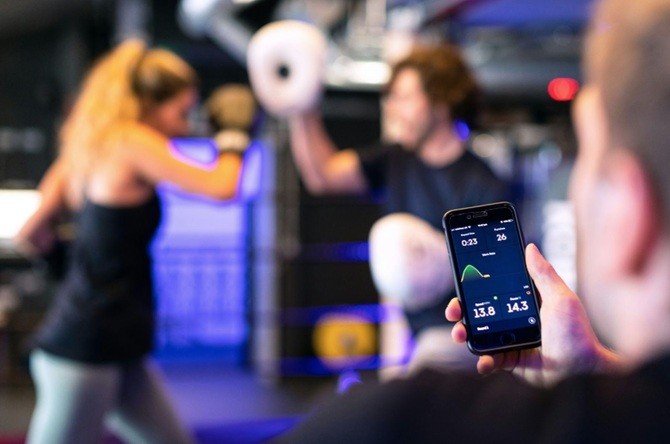How Gaming and Fitness Apps Are Merging Worlds

The line between gaming and fitness is rapidly fading as technology continues to redefine how people engage with physical activity. Millions of users are turning to interactive platforms that make exercise feel like play, transforming the way they view both health and entertainment.
Many users who enjoy digital entertainment also explore skill-based games that offer excitement and variety, such as lightning roulette online, a title combining chance, anticipation, and visual thrill.
The Rise of Gamified Fitness
Gamification in fitness began with simple reward systems. Early mobile apps such as Fitbit and MyFitnessPal introduced progress bars and achievement badges to encourage consistent use. Over time, competition became a central feature. Leaderboards, streak systems, and collaborative challenges started to replicate the social appeal of online gaming.
Key Mechanics Driving Engagement
The following core elements explain why users stay consistent and entertained while exercising:
- Immediate feedback: Progress indicators, visual rewards, and sounds reinforce every achievement.
- Social interaction: Competing or collaborating with friends enhances accountability.
- Progressive challenges: Levels and milestones provide structure and a gradual increase in difficulty.
- Customization: Personalized avatars and fitness goals foster emotional investment.
Together, these mechanics bridge the emotional satisfaction of gaming with the physical benefits of training, creating a new form of lifestyle entertainment.
Examples of Popular Gamified Fitness Platforms
Real-world examples highlight how diverse and creative this trend has become across both gaming and fitness industries. Each platform blends storytelling, technology, and physical activity to keep users engaged.
- Zombies, Run! combines storytelling and cardio training through audio missions.
- Ring Fit Adventure integrates physical exercises into an RPG environment.
- Pokémon GO encourages outdoor walking through augmented reality exploration.
- Supernatural (VR) immerses users in full-body workouts across virtual landscapes.
- Strava builds communities through competitive challenges and social leaderboards.
These examples demonstrate that entertainment mechanics can drive physical activity and social connection at once.
The Role of Technology Integration
Modern fitness platforms synchronize with wearable devices, cloud storage, and even home entertainment systems. Smartwatches track heart rate, movement, and calories burned in real time, sending data directly to gaming-inspired dashboards.
Artificial intelligence enhances this process by analyzing performance trends and recommending new challenges. For example, Apple Fitness+ and Peloton Interactive adapt workouts based on past activity levels. Peloton users compete in global leaderboards, collect digital badges, and participate in live sessions that resemble multiplayer matches.
Furthermore, virtual and augmented reality devices are extending this convergence. Supernatural, available on Meta Quest, transports users into scenic landscapes where they box, stretch, and dance in rhythm-based sessions. Similarly, FitXR uses VR technology to create high-intensity workouts with global leaderboards, encouraging friendly competition while promoting cardiovascular health.
Building Global Fitness Communities
The social structure of gaming has influenced how fitness enthusiasts connect. Global leaderboards, tournaments, and in-app communities have created a sense of shared purpose. Platforms such as Strava allow users to record routes, share progress, and compete on timed segments. Each achievement feels like leveling up in an online game, reinforcing persistence through measurable milestones.
Live-streaming integration also plays a growing role. Viewers can watch, comment, and even participate in real-time challenges with influencers or professional trainers. The sense of belonging and recognition amplifies motivation, reinforcing long-term commitment to fitness goals.
How Brands Are Adapting

Corporations have recognized the commercial value of this trend and are rapidly adapting their marketing strategies to fit digital lifestyles. They use gamification to engage customers, reward performance, and promote health-driven participation:
- Sportswear companies create limited-edition virtual rewards and discounts for in-app achievements.
- Gyms introduce point-based loyalty systems that mirror in-game progress mechanics.
- Insurance providers offer incentives linked to verified step counts and active streaks.
- Brands sponsor global fitness challenges through mobile platforms to reach new audiences.
Through these collaborations, companies connect entertainment with wellness, transforming routine exercise into an opportunity for engagement, retention, and community building.
Where the Trend Is Headed
The fusion of gaming and fitness continues to expand with every technological breakthrough. The future likely involves biometric-based gameplay, where real-time physical data influences virtual environments. For instance, heart rate or motion sensors may determine a player’s ability to unlock specific levels or bonuses.
Cross-platform compatibility will deepen integration between devices, ensuring seamless transitions from workouts to gaming sessions. Developers are exploring blockchain-based reward systems, allowing users to earn digital assets through physical achievements. Such innovations may redefine what it means to be both a gamer and an athlete in the digital age.




